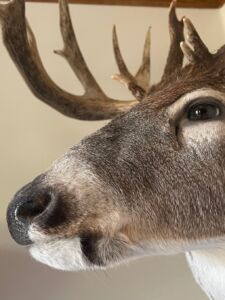 My friends over at North American Whitetail magazine just published this article on the Science of the Whitetail Rut by deer researcher Clint McCoy. Among many other interesting rut things, Clint talks about a topic we’ve never addressed here at Big Deer: the pineal gland, which lies close to the optic nerve in a buck’s brain…variations in photo-period (amount of light each day) prompt the pineal gland to initiate hormonal reactions in a buck’s body.
My friends over at North American Whitetail magazine just published this article on the Science of the Whitetail Rut by deer researcher Clint McCoy. Among many other interesting rut things, Clint talks about a topic we’ve never addressed here at Big Deer: the pineal gland, which lies close to the optic nerve in a buck’s brain…variations in photo-period (amount of light each day) prompt the pineal gland to initiate hormonal reactions in a buck’s body.
Clint first points out that the whitetail deer is a “short-day breeder.” After the summer solstice occurs on June 21, each day’s length begins to shorten, dropping to less than 11 hours a day in early to mid-November. He then writes, …as daily photo-period reduces with shortening days, a tiny little organ in the (buck’s) brain begins to wake from its endocrine slumber: the pineal gland. The pineal gland responds to light reduction by secreting another hormone called melatonin. Melatonin increases gradually throughout the shortening days, resulting in a hormonal cascade involving the brain’s hypothalamus and the pituitary gland. The end result here is the pituitary gland’s hyper-secretion of two more hormones, LH and FSH. And in the whitetail buck, these two compounds hit the blood stream and head straight to a buck’s testicles. This is where the magic happens!
FSH acts on the buck’s testicular Sertoli cells and causes them to start producing sperm cells for breeding. LH in the bloodstream tells testicular Leydig cells to make one thing and one thing only: testosterone. Now, after the process began around the summer solstice and built until the middle of November, the whitetail buck has become a fully functional breeding machine.





